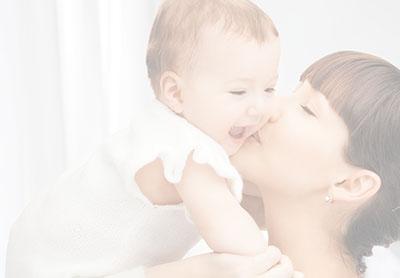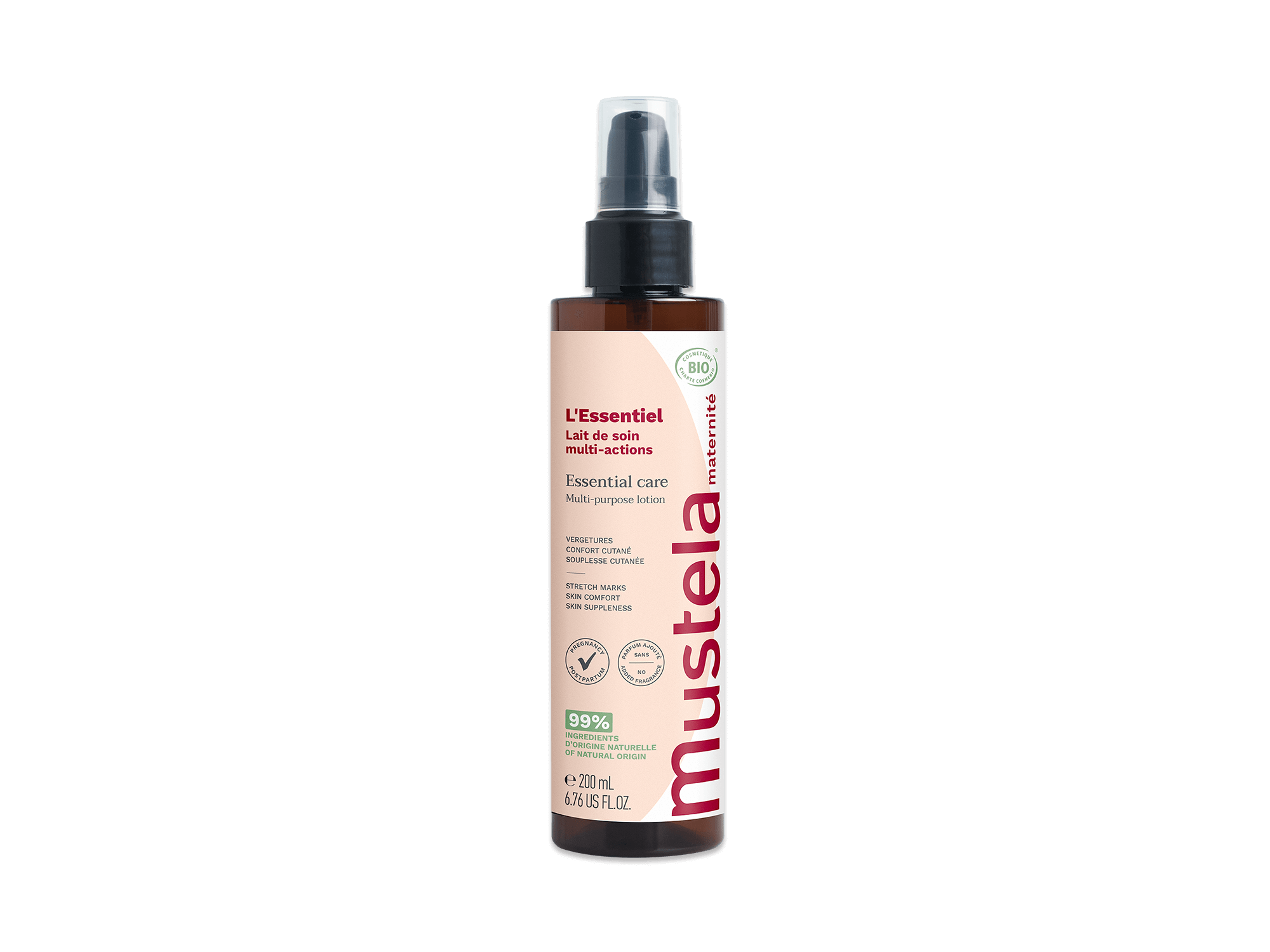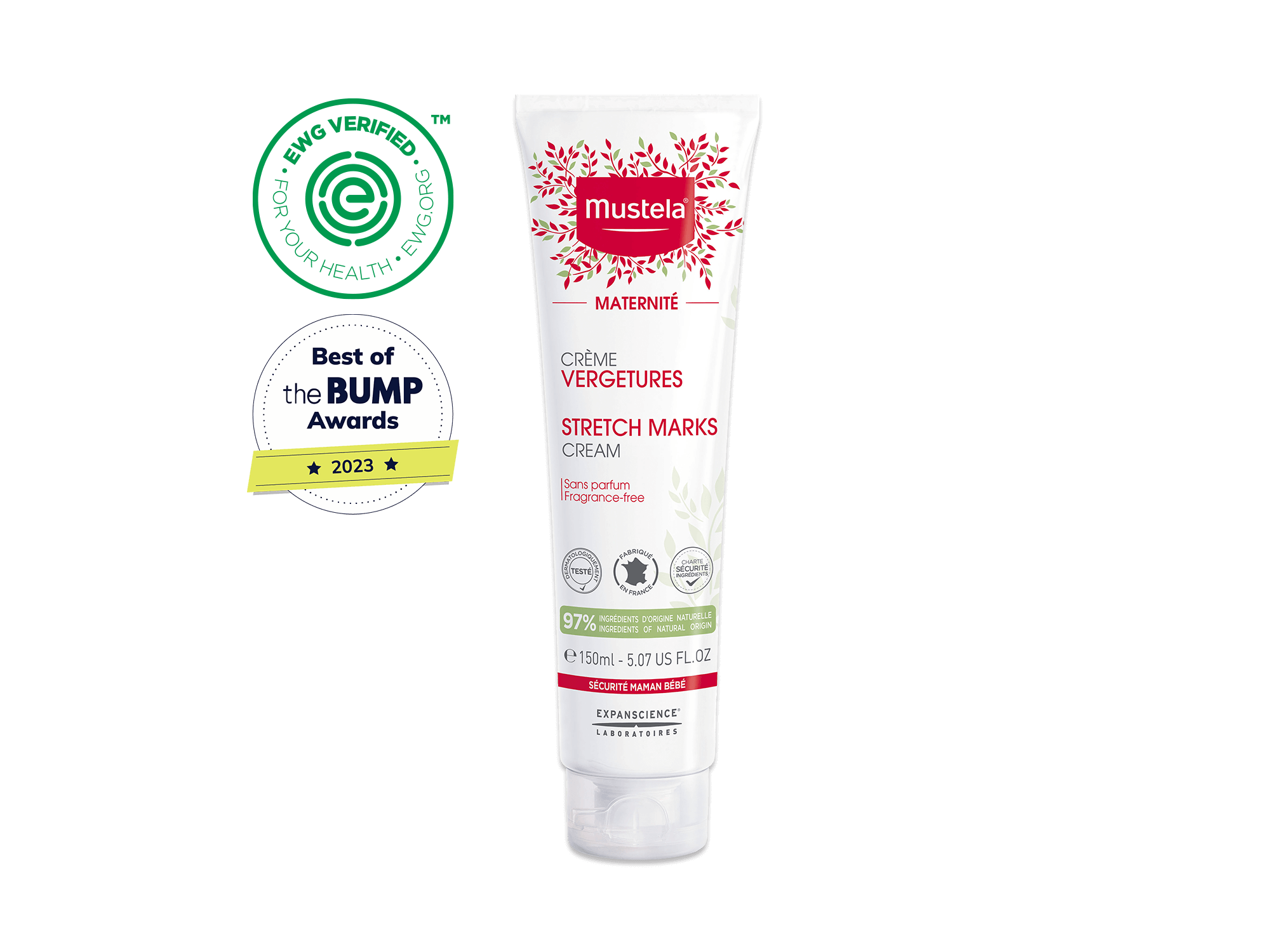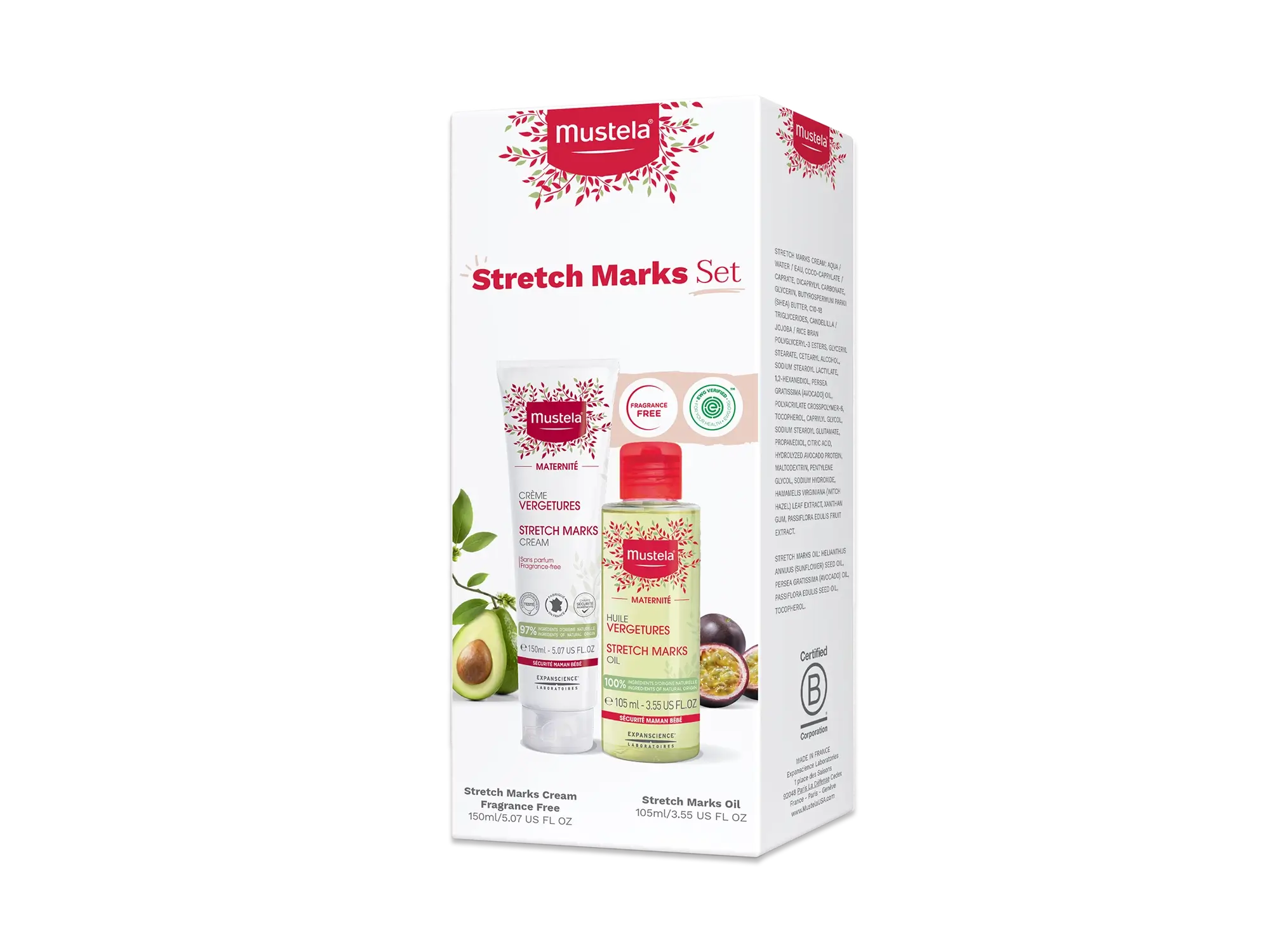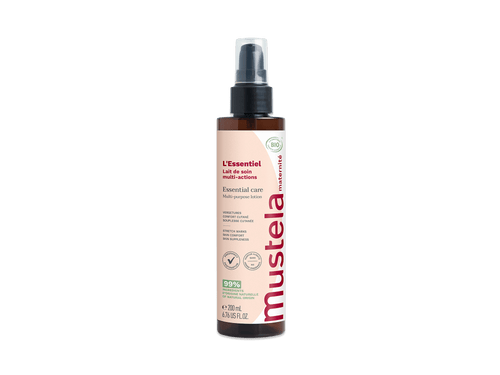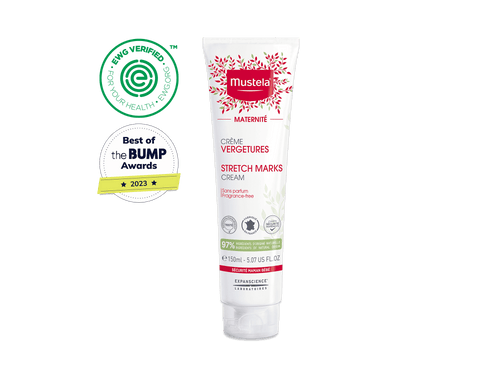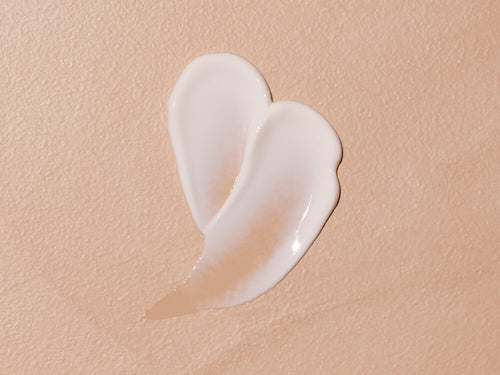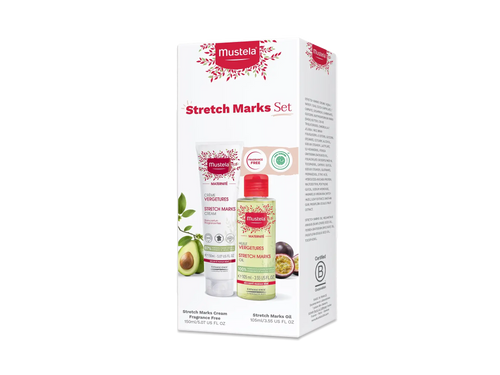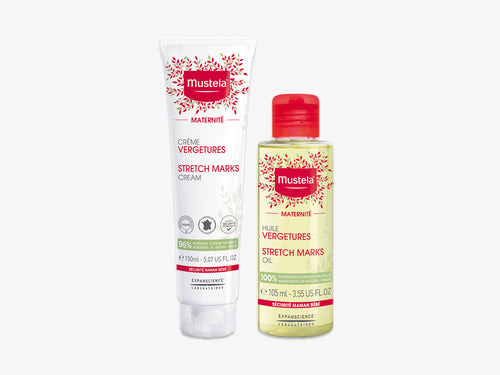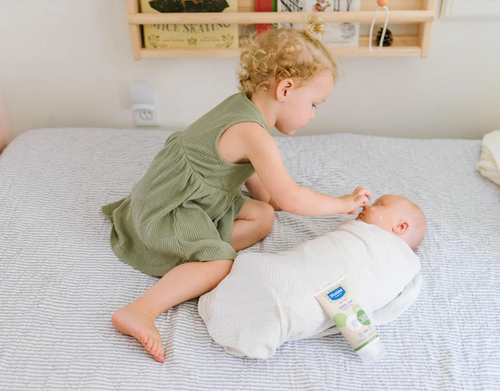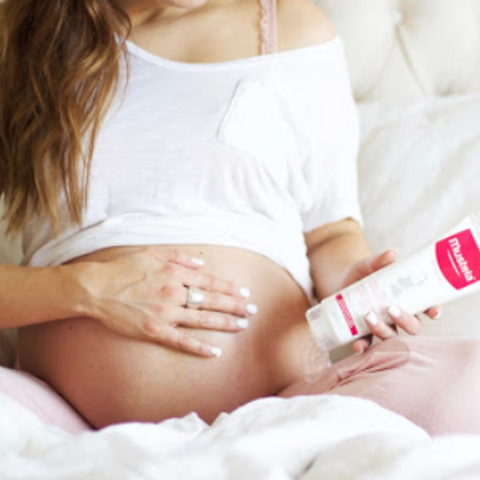Up until age 2, your child’s skin is delicate and immature. It has few defenses against harsh elements, it’s easily irritated, and it’s sometimes prone to red blotches. That’s why baby skin care is so important.
In this article, the baby skin care experts at Mustela will tell you everything you need to know about your little one’s soft skin. First, we’ll cover the most common baby skin care conditions. Then we’ll explain how to choose the right baby skin care products and reveal 14 simple tips for taking extra special care of your little one’s skin.

Common Baby Skin Care Conditions
Infants are known for having soft, sensitive skin. Sometimes, this leads to skin problems. Here are some of the most common baby skin care conditions.
Dry Skin
We all get dry skin from time to time. The same is true for babies! This is especially common among newborns, who may have dry, peeling skin while they adjust to life outside the womb. Normally, newborn peeling skin goes away in a week or two.
Dry skin, on the other hand, can affect children of any age. It may be caused by harsh skin care products, dry or cold weather, or a number of other factors.
Dandruff
Although it’s usually associated with full heads of hair, dandruff is a skin condition that can affect your little one’s scalp at many stages of development. Baby dandruff is mild and can be treated using a gentle shampoo formulated for newborns.
Cradle Cap
If your baby’s dandruff is not treated or appears to be a bit more irritated or dry, there’s a chance that seborrheic dermatitis, better known as cradle cap, could be the cause.
Cradle cap can be identified by yellow crust or red patches on your baby’s scalp. While it is a bit more severe than dandruff, it is still extremely common for newborns. Cradle cap is not painful or contagious and usually goes away on its own in about two weeks.
Heat Rash
Yet another common baby skin care condition is heat rash. Infants tend to have a good amount of baby fat, which can lead to folds and creases in their skin. Combined with tight-fitting diapers and clothing, this excess skin can become hot and irritated, leading to heat rash.
Diaper Rash
Diaper rash is similar to heat rash but occurs exclusively around your baby’s waistline and thighs. Heat may be a contributing factor to diaper rash, but the moisture and bacteria that diapers lock in also play a huge role.
To avoid diaper rash, simply change your baby’s diapers as soon as they become soiled and make sure you’re always cleaning your baby’s bottom the right way.
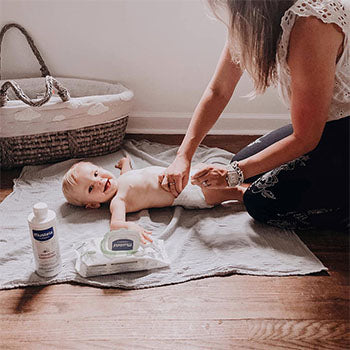
Baby Acne
Most of the time, we think of acne as a skin problem for teenagers in the midst of puberty. However, baby acne is a common baby skin care condition, too.
Baby acne is perfectly normal. It doesn’t cause any discomfort and is easily treated.
Eczema
Atopic dermatitis, also known as eczema, is characterized by patches of dry, irritated, reddish-colored skin that doesn't seem to have any obvious causes. In reality, eczema is an allergy-related issue.
While experts aren’t sure why, research has shown that baby eczema is on the rise. Unfortunately, eczema is one baby skin care condition that does cause discomfort. On the bright side, treating baby eczema is possible.
Choosing The Best Baby Skin Care Products
When it comes to baby skin care, it’s essential to always choose skin care products that are specially formulated for a baby’s skin. Your little one’s skin care products should be hypoallergenic and tested under the supervision of dermatologists and pediatricians.
Here are some helpful tips for choosing all of the most important baby skin care products.
Bathtime Products
Use cleansers (rather than hash soaps) like Mustela’s Gentle Cleansing Gel or other cleansers. Make sure to rinse cleansers off thoroughly to prevent irritation and dryness on your little one’s skin.
As for shampoos, try Mustela’s Foam Shampoo For Newborns or Gentle Shampoo. Both will gently wash your baby’s scalp and hair without damaging or irritating their delicate skin.
Creams And Lotions
Moisturizing is a crucial part of baby skin care. Keep your baby’s skin hydrated with gentle moisturizing lotions like Mustela’s Hydra Bebe Body Lotion and EWG verified Soothing Moisturizing Face Cream.
For any little ones experiencing cradle cap, using our Cradle Cap Cream is a safe and easy way to not only rid your baby’s scalp of dryness and irritation, but also help prevent any future occurrences of the condition.
Baby Wipes
While they might not always come to mind, baby wipes play a huge role in your little one’s skin care. Choosing the right baby wipes is essential to keeping your baby’s sensitive skin healthy.
With Mustela’s Cleansing Wipes or EWG Verified Certified Organic Water Wipes with Cotton and Aloe, you’ll be ensuring the highest level of baby skin care for your little one.
Baby Oil
A little baby oil goes a long way. Put a few drops of Bath Oil in your baby’s bath water or apply a few drops of Baby Oil to your child’s body and scalp to keep their skin hydrated and protected.
Sunscreen
The sun’s UV rays can severely harm your little one’s delicate skin and lead to baby sunburn. Whenever you take your child outside, be sure to apply a mineral sunscreen, rather than a chemical sunscreen.
All Mustela sun protection products are NEA certified mineral sunscreen. Available in spray, lotion, or stick, our gentle sunscreen is ideal for the whole family, even those with sensitive skin.
Massage Balm
For every occasion that your little one needs a gentle, relaxing massage, Mustela’s Melting Massage Balm can leave their skin soft and supple. The melting texture of the balm is ideal for moisturizing while being gentle on your baby.

14 Simple Baby Skincare Tips
Making sure your little one’s skin stays fresh and hydrated can feel time-consuming. The truth is using the right products and following a few simple steps can make all the difference when it comes to caring for their skin.
To help your baby fight dryness and irritation, follow these 14 simple skincare tips below.
1) Be Mindful When Bathing Your Baby
Bathtime is a great opportunity for bonding with your little one, but bathing too frequently (more than once per day), using the wrong bath products, or having the bath water too hot can all irritate your baby’s skin.
To bathe your little one while keeping up with best baby skin care practices, make sure the bath water is around 98 degrees Fahrenheit and follow these 10 tips for baby baths.
2) Use No-Rinse Cleansers
If you choose not to give your baby a bath every day, you can keep their skin clean on the off days with a micellar water, like our No-Rinse Cleansing Water or EWG Verified Certified Organic Micellar Water with Olive Oil and Aloe.
Doing this will remove dirt from your baby’s pores while avoiding any irritation.
3) Change Your Baby’s Diapers Whenever Needed
It may seem like your little one’s diaper is constantly dirty, but it’s important to change it as soon as it becomes soiled. Leaving your little one in a dirty diaper can lead to infections or a baby rash. While it can be laborious, it’s crucial to keep your little one in a clean diaper.
It’s also worth pointing out here that it’s OK to let your little one spend some time in their birthday suit after removing a dirty diaper and wiping their bottom. This will allow their skin to breathe and any excess moisture to evaporate.
4) Keep Your Baby’s Skin Moisturized
Just as with any adult skin care routine, moisturizing is an essential step in baby skin care. At least once per day, carefully moisturize your baby’s entire body and face using a mild moisturizing cream or body lotion on normal skin, or cold cream treatment on dry skin.
For eczema-prone skin, try our Stelatopia Emollient Cream. Recognized by the National Eczema Association, this cream soothes your little one’s skin and reinforces skin’s moisture barrier.
5) Give Your Baby A Gentle Massage
While moisturizing your little one’s skin, take the opportunity to briefly massage your baby if they enjoy it. Gently massage your baby’s entire body with your moisturizing product until it has fully penetrated their skin, or use a massage oil specially designed for babies.
Not only is massage very effective for relaxing your baby as preparation for sleep, but it’s also a wonderful opportunity to bond with your little one.
6) Don’t Forget The Easy-To-Miss Places
Your baby’s body has many little nooks and crannies, so make sure to cleanse and moisturize all of those hard-to-reach places.
Remember to check the area behind your baby’s ears on a regular basis. This spot is often overlooked, but it’s prone to rashes and dryness. For your baby’s lips and exposed sensitive areas, use a moisturizing stick.
7) Protect Your Baby’s Skin From The Elements

Since your little one’s skin is so sensitive, it’s important to keep them covered up to protect against the elements. When you go out with your baby during the autumn or winter months, cover sensitive areas completely (head, nose, throat, ears, hands, etc.) with a hat, scarf, mittens, and so on.
You’ll protect your child against not only colds but also the drying effects of chilly air.
8) Dress Your Baby In Layers
Because your little one can easily become too hot or a little chilly, it’s best to always dress them in layers.
When your baby seems squirmy and feels warm, just peel off a layer. If they seem uncomfortable and their body feels cold, simply add an additional layer to warm them up. This is an effective way to keep them content and is important for baby skin care.
9) Choose Their Clothes Wisely
An unexpected culprit for your baby’s dry skin could also be the clothing itself. The best clothes for your baby should be soft, breathable, and all-natural.
Note: While it is a natural fiber, the exception to this rule is wool as it can be rough on a baby’s skin and cause irritation.
Also, be sure to avoid synthetic clothing when dressing your little one. Unlike natural materials, synthetic clothes are not breathable and don’t absorb moisture. A simple mix of synthetic fabrics and sweat can cause their skin to itch or even cause an eczema flare-up.
Polyester and nylon are two of the most common synthetic materials to avoid to protect your baby’s skin and overall health. This is important to remember when shopping for things like their bedding as well, as many sheets are made from these materials.
At bedtime, dress your little one in our Stelatopia Skin Soothing Pajamas, made with 100% OEKO-TEK® certified cotton. Using microcapsule technology, these comfy pajamas deliver skin-soothing moisture to your child’s skin throughout the night.
10) Be Mindful When Washing Clothes
The laundry detergent cleaning your baby’s clothes could be yet another reason for redness. Since babies can be sensitive to harsh cleaning agents, it’s important to be mindful of what’s in the formula used to wash their outfits.
Using an unscented and gentle detergent for their clothes can help avoid redness caused by stain-fighting chemicals found in regular laundry soaps, especially if your baby is hypersensitive or has allergies.

11) Ditch The Baby Powder And Soap
Baby powder might seem like a staple for childcare purposes, but it’s typically not needed. Using all-natural creams and lotions is a much more effective way to help your baby’s skin, especially since many baby powders contain talc, which can harm your baby’s lungs if inhaled.
Commercially available soap can also be harsh on your baby’s skin, causing flaking and irritation. For a soap that is good for the health of your little one’s skin, try Mustela’s Gentle Soap With Cold Cream.
12) Pay Attention To Product Labels
One of the most important things you can do when caring for your baby’s skin is check the label. Even some products made specifically for babies might not be the absolute best choice for them.
Make sure the products you choose are all-natural and safe for your baby. Natural remedies help ensure moisturization without causing further irritation by chemicals that can trigger your baby’s skin.
For the best options, try using organic products on your child’s skin. Our certified organic products and EWG Verified products might be just the thing your little one has been looking for.
13) Try Using A Humidifier
Living in an area where the air is known for being dry can have an impact on your baby’s skin. If all else fails, then a humidifier might be just the thing you need to increase the moisture in the air and rid their skin of dryness.

14) Know When To Seek Medical Help
While many infant skin conditions are common and easily treated, not every rash can be fixed with the perfect product. Some conditions indicate something more serious, and you should consult with a medical professional.
For example, diseases such as measles might appear as a skin condition initially but will be accompanied by a high fever, cough, and runny nose. These types of symptoms help further distinguish many diseases from skin conditions.
If you have any doubts about the condition of your baby’s health, then seeking help from a medical professional is highly recommended.
Creating A Baby Skin Care Regimen
We all have our favorite skincare routines that keep us looking our best. By following these tips and using trusted skin care products designed for your baby, you can make sure your little one has a healthy skincare “routine” of their very own!
Determining whether your baby has eczema-prone skin, is sensitive to certain materials, or is irritated by a specific chemical ingredient will help you find which products are best to use and which tips will be helpful to follow when keeping up with their regimen.
One final tip to keep in mind when caring for your baby’s skin is that less is more. While their skin is still maturing, overdoing it on products can sometimes have an adverse effect.
At Mustela, we manufacture products that both you and your whole family can use for your skincare needs. Through ingredients of natural origin per ISO 16128 standard, organic options, and environmentally responsible products, our mission is to make parents’ lives easier when caring for their loved ones.
It’s no secret that babies have sensitive, delicate skin. With the right baby skin care products, like Mustela’s, and the 14 tips we’ve listed here, you’ll be caring for your baby’s skin like a pro.


